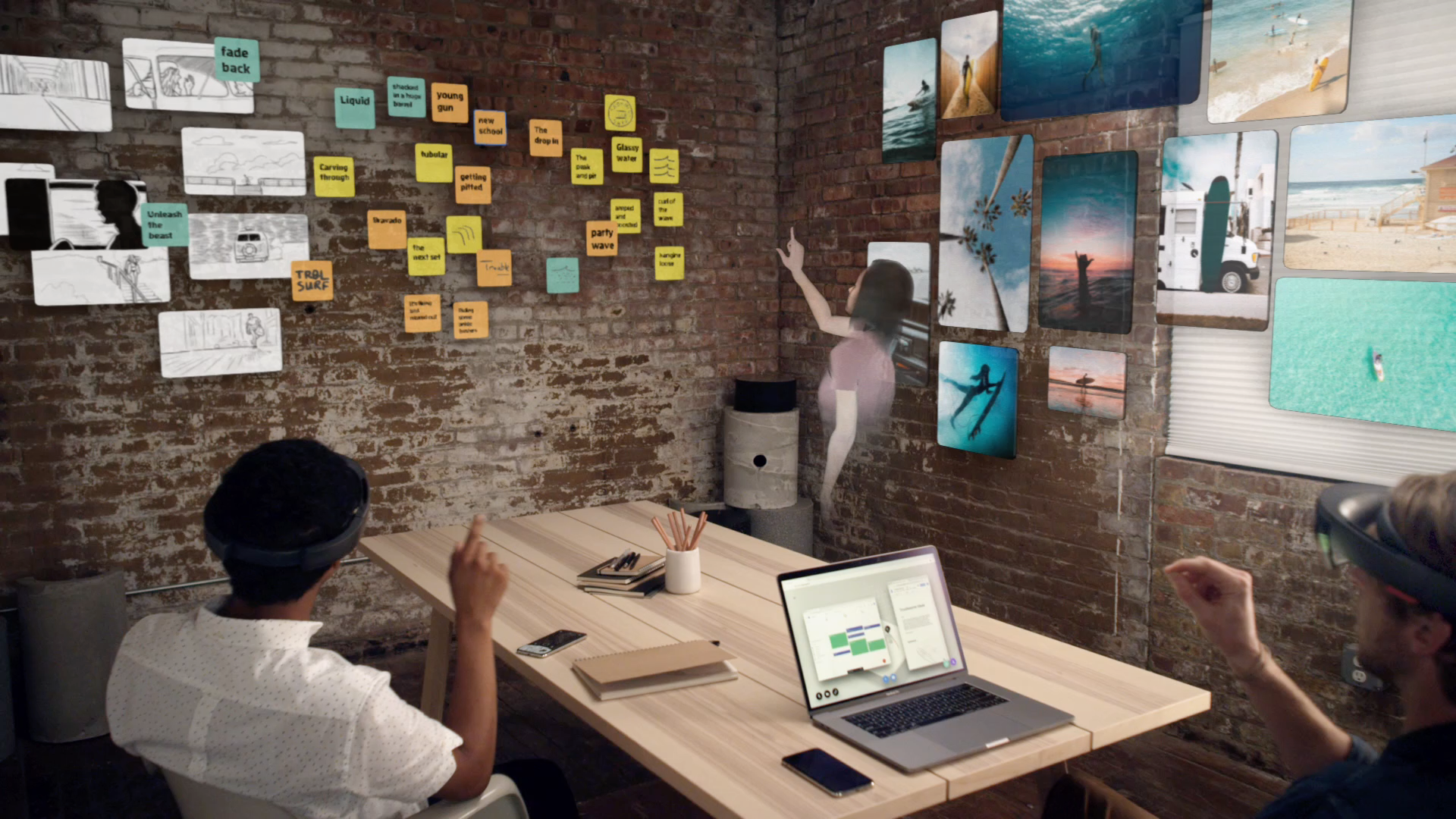Legitimate augmented reality use cases are hard to come by. Spatial, which dubs itself as a cross-reality platform, is launching today with $8 million in seed funding from iNovia Capital, Uber co-founder and Expa founder Garret Camp, Samsung Next, Joi Ito of MIT Media Lab, Mark Pincus and Andy Hertzfeld to bring augmented reality to enterprise customers. Spatial envisions its solution replacing tools like Google Hangouts, Zoom and the numerous other virtual workplace meeting apps.
While many companies are focused on games and entertainment, Spatial is looking at how everyday people can use AR for everyday work purposes.
“We think the future of work is going to be increasingly distributed,” Spatial co-founder and CEO Anand Agarawala told TechCrunch. “When you put on Spatial, they are in the room with you. It feels like they’re all sitting at the table, and they feel like they’ve been teleported into the space with you.”
Spatial is two things. One is a remote presence that enables people to feel like they’re face-to-face with their colleagues. The other is a suite of knowledge tools and an “infinite desktop” that uses the room as your monitor.
Spatial is purely a software platform that has partnerships with Microsoft HoloLens but is hardware agnostic. Spatial also offers both web and phone apps for people who may not have access to an AR headset.

To use Spatial, you would first pop on an AR headset and scan their current environment. From there, Spatial shares that environment with anyone you’d like and enables them to join the space. When you look around the room, you’re able to see and interact with the avatars of your co-workers. But more importantly, you’re all able to interact with a shared set of documents, websites, images and whatever else you or your teammates decide to put in the shared space.
Currently, there are a handful of companies using Spatial’s technology. One of those companies is Ford’s incubator, Ford X, which is piloting the software to enable its teams working on mobility to collaborate remotely. As it stands today, Spatial can handle about 15 to 20 people at a time, but the goal is to scale up to be able to manage hundreds of people at once.
Unlike other types of collaboration software, Spatial doesn’t have a presenter mode because the company wants “social etiquette to take over” and make the experience as realistic as possible, Agarawala said.
You can check it out in action below.
from TechCrunch https://ift.tt/2yyVZdZ

No comments:
Post a Comment